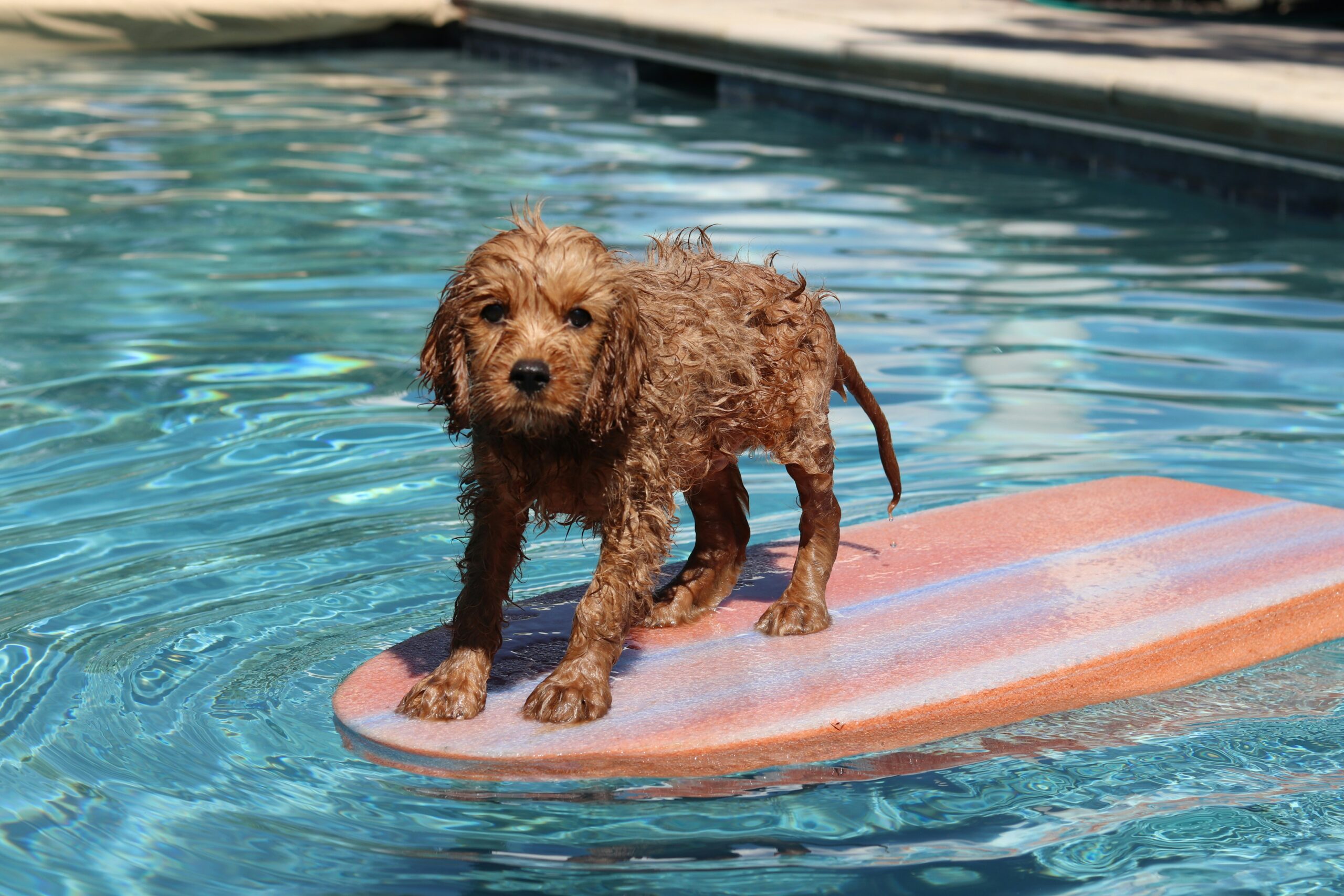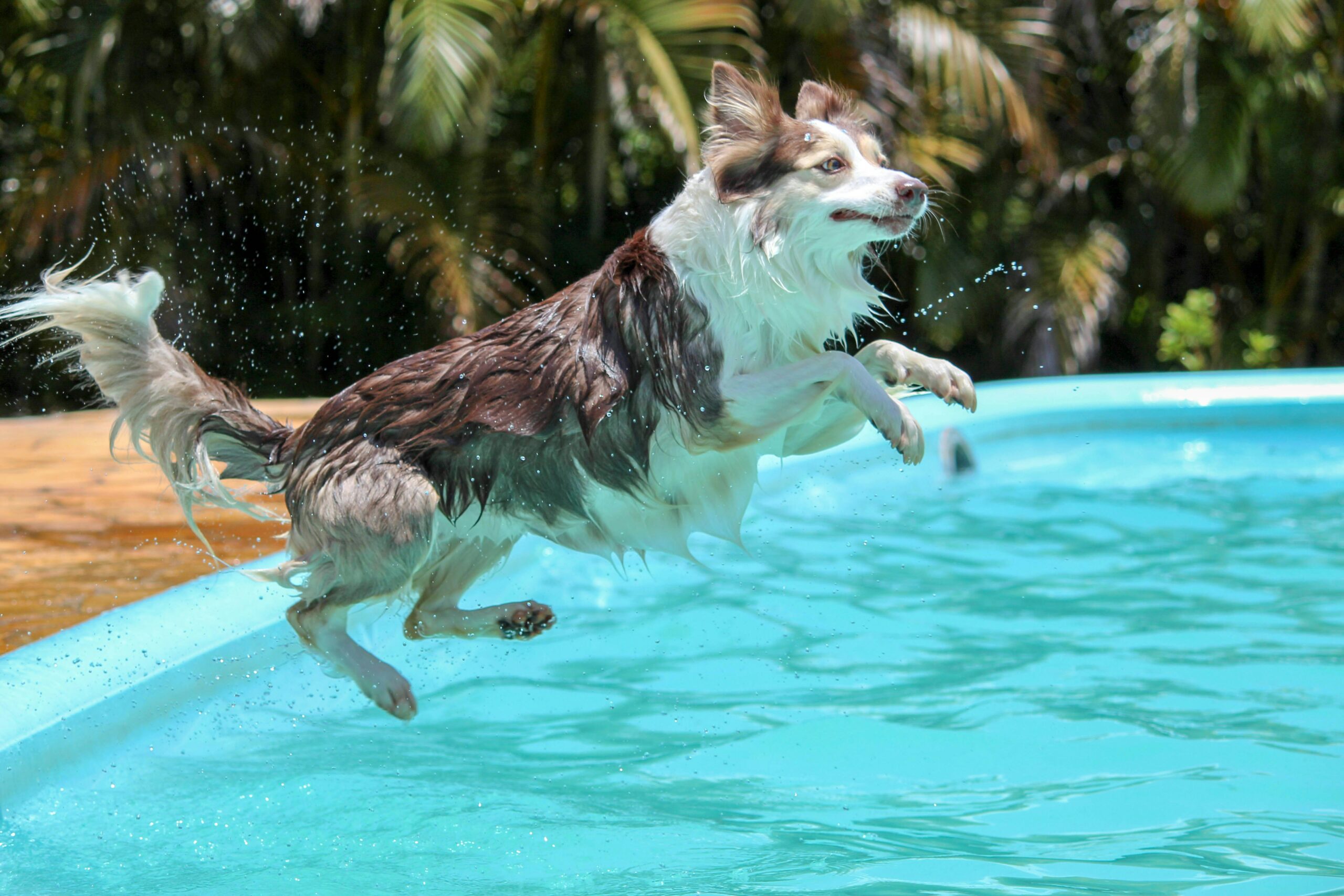Improving Canine Mobility: The Power of Swimming
Swimming is a low-impact exercise that can improve muscle strength, joint range, and overall mobility in dogs with joint problems, making it a beneficial option for dogs with joint or mobility issues.
Overview of Swimming for Dogs with Joint or Mobility Issues
Swimming is considered a low-impact exercise that is not only beneficial for dogs with joint problems but also serves as an excellent way to promote their overall well-being. The buoyancy of water reduces the stress on a dog’s joints, making it an ideal form of exercise for those with mobility issues or arthritis. Additionally, swimming aids in maintaining muscle tone and improving cardiovascular fitness in dogs, contributing to their overall health and quality of life.
One example of the benefits of swimming for dogs with joint issues is its ability to increase blood flow, reduce inflammation, and promote healing in arthritic dogs. The therapeutic properties of water help in alleviating pain and discomfort associated with conditions like osteoarthritis, allowing dogs to move more comfortably and freely. Moreover, swimming provides a controlled environment that supports the joints and muscles, making it a safer and more effective exercise option for dogs with mobility limitations.
Benefits of Swimming for Dogs with Joint Issues
Swimming is a highly beneficial exercise for dogs with joint issues due to its multifaceted advantages. For instance, swimming not only helps increase blood flow but also reduces inflammation and promotes healing in arthritic dogs. An illustrative example of this is a study that showed swimming can delay morphological changes in osteoarthritis (OA) joints and increase hyaluronic acid (HA) synthesis. By improving joint function and serum biomarker levels, swimming serves as a therapeutic tool that enhances the overall well-being of dogs with joint problems.
Moreover, the controlled environment provided by swimming is essential for arthritic dogs as it aids in alleviating pain and improving joint flexibility. For dogs with mobility issues, weight loss achieved through swimming can be a game-changer. Consider a scenario where an overweight dog with arthritis engages in regular swimming sessions. The low-impact nature of swimming allows the dog to exercise without putting excessive strain on the joints, leading to gradual weight loss, reduced joint stress, and an improvement in overall health.
Hydrotherapy for Dogs with Mobility Issues
Hydrotherapy plays a crucial role in aiding dogs with hip dysplasia by providing numerous benefits that contribute to their overall well-being. For instance, hydrotherapy offers joint lubrication , which helps in reducing friction and discomfort in the hip joint, thereby improving mobility and comfort for the affected dogs. Additionally, the muscle strengthening aspect of hydrotherapy is vital as it assists in supporting the joints, alleviating strain, and promoting muscle development, which is especially beneficial for dogs with conditions that affect their mobility.
Moreover, hydrotherapy contributes to the psychological well-being of dogs with mobility issues. The water environment in hydrotherapy sessions can have a calming effect on dogs, reducing anxiety and stress levels, which is particularly important for dogs dealing with chronic pain or mobility limitations. Furthermore, the tailored exercises involved in hydrotherapy, such as passive range of motion exercises, stretching routines, and resistance training, are designed to improve muscle strength, flexibility, and coordination, thereby enhancing the overall quality of life for dogs with degenerative joint diseases. These therapeutic exercises aim to address specific mobility issues and aid in maintaining or improving the dog’s physical capabilities for better mobility and comfort in their daily lives.
Precautions for Swimming with Dogs with Joint Problems
When engaging in swimming activities with dogs that have joint problems, it is vital to consider various precautions to guarantee a positive experience for the furry companions. One important measure is to ensure that the water temperature during the swimming session is warm, as cold water can cause muscle stiffness and discomfort, especially in dogs with joint issues. Additionally, providing life jackets for dogs, even if they are proficient swimmers, can offer an extra layer of safety and buoyancy, aiding in their confidence while in the water.
Moreover, constant supervision is paramount when swimming with arthritic dogs to prevent any mishaps and ensure a controlled environment for their aquatic exercise. By having a trained eye overseeing the activity, any signs of fatigue or distress can be promptly addressed, promoting a safe and enjoyable swimming session. It is advised to consult with a veterinarian to establish a personalized exercise regimen that considers the dog’s specific joint condition, fitness level, and any other health concerns. This tailored approach can maximize the benefits of swimming while minimizing the risks, contributing to the overall well-being of dogs with joint problems.
Success Stories and Testimonials
Hydrotherapy has garnered acclaim for its remarkable success in enhancing joint health and mobility in dogs diagnosed with arthritis or degenerative joint disease. For instance, a case study highlighted a senior Labrador Retriever named Max who struggled with arthritis. After undergoing a hydrotherapy program that included underwater treadmill sessions and aquatic massage, Max displayed increased joint flexibility, reduced pain, and improved overall mobility. The positive outcomes observed in Max’s condition exemplify the effectiveness of hydrotherapy in managing joint issues in dogs.
Moreover, swimming has emerged as a transformative intervention that has positively impacted the lives of numerous dogs facing joint or mobility challenges. One inspiring tale is that of Luna, a Golden Retriever diagnosed with hip dysplasia. Luna’s owner introduced her to swimming as part of her rehabilitation regimen, and over time, Luna exhibited enhanced muscle strength, reduced inflammation, and a renewed sense of vitality. Luna’s story serves as a testament to the benefits of swimming for dogs with joint issues, showcasing how this low-impact exercise can significantly enhance their quality of life.
Furthermore, seeking guidance from an animal physiotherapist or veterinarian is crucial in tailoring a personalized exercise plan for dogs coping with arthritis. By collaborating with a professional to design a customized regimen that considers the dog’s specific condition, limitations, and goals, pet owners can ensure that their furry companions receive optimal care and support in managing their joint health. This personalized approach, as demonstrated in the case of Milo, a German Shepherd with osteoarthritis, resulted in a tailored exercise plan that combined swimming sessions, joint supplements, and targeted stretches, leading to a noticeable improvement in Milo’s mobility and overall well-being. The individualized care provided through consultation with experts underscores the importance of professional guidance in optimizing the health and happiness of dogs with arthritic conditions.
 Expert Insights and Recommendations
Expert Insights and Recommendations
Experts in canine rehabilitation and veterinary care stress the importance of incorporating swimming as part of the exercise regimen for dogs with joint issues. Swimming provides a unique opportunity for dogs to engage in physical activity while minimizing stress on their joints, making it an ideal low-impact exercise option. For example, a study conducted by Nganvongpanit et al. demonstrated that swimming over an 8-week period led to significant improvements in joint function and serum biomarker levels in dogs with osteoarthritis, highlighting the therapeutic benefits of this activity.
Furthermore, swimming is not only beneficial for arthritic dogs but also offers a more comfortable and enjoyable experience compared to traditional land-based exercises. For instance, the buoyancy of water reduces the weight-bearing load on the joints, allowing dogs to move freely and exercise without exacerbating their pain or discomfort. This increased comfort level encourages dogs to stay active, promoting muscle strength and joint flexibility over time. Additionally, experts emphasize the importance of combining swimming with joint supplements, medications, and other low-impact exercises to create a holistic approach to managing joint or mobility issues in dogs. By tailoring a comprehensive treatment plan that includes swimming alongside these supplementary measures, pet owners can enhance their furry companions’ overall well-being and quality of life.



